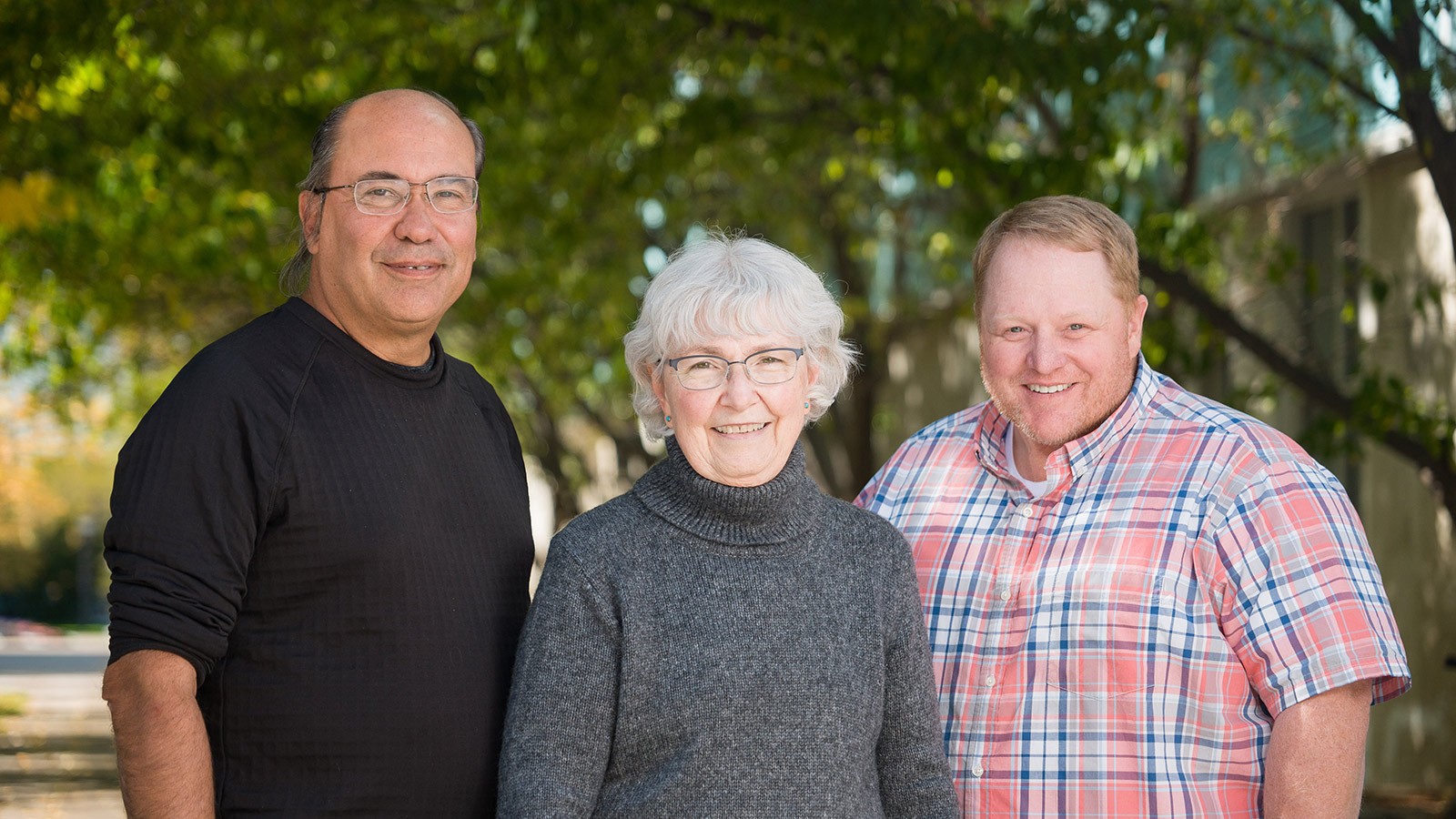Beef Going Green: Major New Grant Supports Strategies for Sustainable Grazing
They say that you can't have your cake and eat it too—but what about beef?
By Lael Gilbert |
With support from a major new grant from the USDA, Juan Villalba (left), Jennifer MacAdam, Eric Thacker and Kathy Trundle (not pictured) will work on novel ways to produce beef as an environmentally, economically and socially sustainable food.
They say that you can’t have your cake and eat it too—but what about beef? Is it possible to graze cattle while maintaining healthy rangelands; to cut harmful methane gases produced by cows while keeping ranches economically sound? With the support of a major new $6.8 million grant from the USDA National Institute of Food and Agriculture, Juan Villalba and a diverse team of collaborators will work over the next five years toward resolving the tangled issue; how to produce beef as an environmentally, economically and socially sustainable food.
Villalba, from Utah State University’s Department of Wildland Resources, is leading a diverse team of researchers and communicators to tackle the complex problem. The strategy they think will provide answers is ‘smart foodscapes’—islands of nutritionally dense and botanically diverse plants strategically placed on rangelands to improve cattle nutrition and reduce environmental impacts, while increasing biodiversity and extending grazing seasons.
Beef is an environmentally expensive product, but one that we strongly depend on. Rangeland cattle in the West graze on grasses like crested wheatgrass during the summer. But as the season progresses, the quality of these grasses plummets, requiring expensive supplemental feeding and indirectly harming the environment through (ahem) poor digestion that introduces greenhouse gases into the atmosphere. By strategically introducing 24 types of native and nonnative plants shown to be resilient on rangelands, the researchers plan to demonstrate that there is a way to offer cattle better sources of proteins and carbohydrates, with a dash of natural biochemicals to cut down on cattle nitrogen and methane production. These plant ‘islands’ will also be designed to act as a biodiverse oasis for native pollinators, and wildlife, adding net benefit to the natural environment side by side with better quality grazing.
“Many of the food products you now see advertised as ‘carbon neutral’ achieve that on paper, by putting money into carbon shares after traditional production,” said Jennifer MacAdam, a team leader from USU’s Department of Plants, Soils and Climate. “We’re trying to create a little more authenticity in that process, by actually adjusting the food system to reduce greenhouse gas emissions at the production level. It would be a foundational step forward.”
These researchers know that the issue doesn’t end at the pasture’s edge. They are developing intensive strategies to achieve on-the-ground adoption of their research results, and to get the public involved in the process. Outreach and education components are vital to the program, with plans for demonstration plots, stakeholder training, and hands-in-the-dirt projects like demonstration gardens at public schools, according to team leaders Eric Thacker and Kathy Trundle.
“This is a major undertaking and is only possible with input and expertise from a diverse and dedicated team,” said Villalba. “The first step is to understand how we can change grazing practices to benefit both herd health and the environment. Our next goals are to help people understand that change, and to really implement it. That’s how we’ll be able to measure success.”
Juan Villalba is leading a diverse team of researchers with strategies for creating islands of nutritionally dense and botanically diverse plants strategically placed on rangelands.
WRITER
Lael Gilbert
Public Relations Specialist
Quinney College of Natural Resources
435-797-8455
lael.gilbert@usu.edu
CONTACT
Juan Villalba
Professor
Department of Wildland Resources
juan.villalba@usu.edu
TOPICS
Research 878stories Environment 263stories Grants 228stories Agriculture 225stories Food 168stories Wildland 97stories Farming 77storiesComments and questions regarding this article may be directed to the contact person listed on this page.









